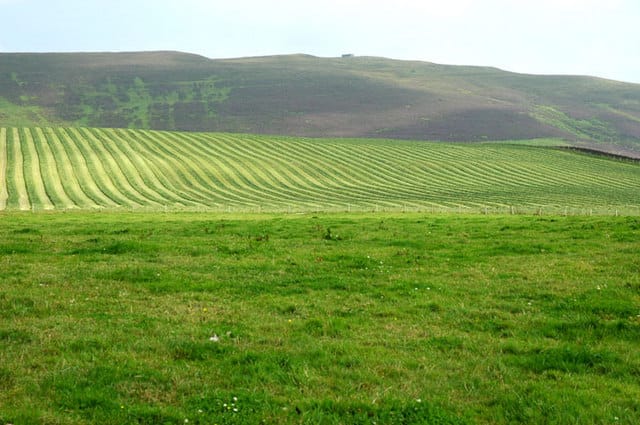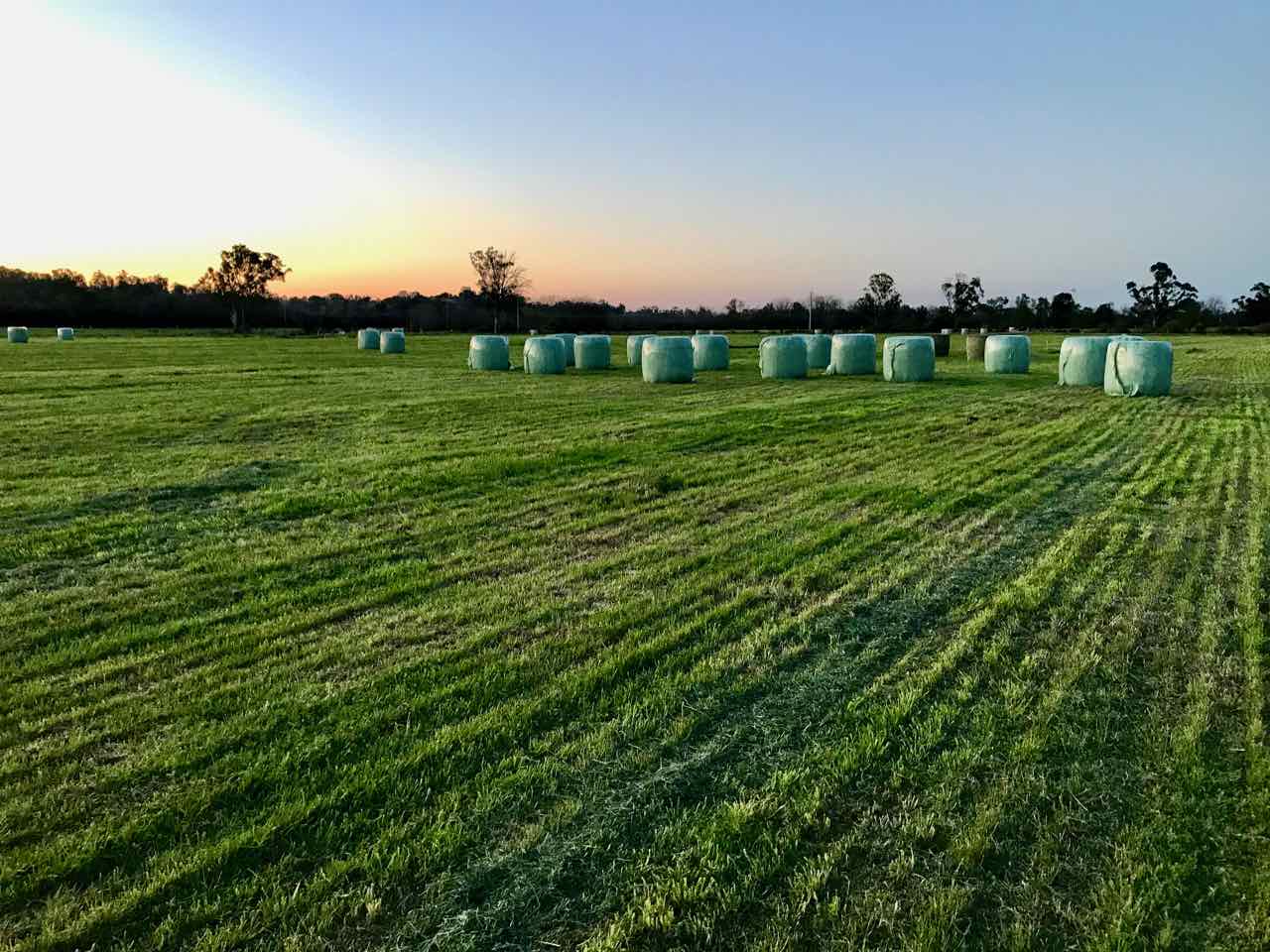Article Summary:
This article provides take away messages on the silaging process. The process of fermenting forage involves rapid removal of air and the production of lactic acid, which reduces the pH of the product. Lactic acid helps to preserve silage by preventing the growth of spoilage microorganisms. It is essential to carefully monitor and manage the temperature during feedout. Many farmers fail to consider the safety precautions when harvesting pasture for silage. Carbon dioxide is tasteless, odorless and tasteless; therefore, silage-making machines should be operated with extreme caution. Read on for much more.
Several factors play a significant role in the success of silage production.
These factors include water-soluble carbohydrates, pasture quality, and crop type. Using molasses to add fermentable sugars to forages can increase the rate of fermentation, decrease pH, and increase organic acid production. In addition, high-energy ingredients such as molasses may increase the dry matter concentration of forages and improve the energy content of the silage. However, molasses are not recommended for harvesting cool-season grasses, as their availability of sugars may stimulate yeast growth and increase the incidence of spoilage.
Phase 5 of silage harvesting
Fermentation takes place in the silage-making process through a biological process. Homo-fermentative bacteria produce lactic acid, which lowers the pH of fermenting forage. Lactic acid helps to preserve silage by preventing the growth of spoilage microorganisms. The fermenting forage involves rapid removal of air and the production of lactic acid, which helps reduce the silage's pH.

Once the silage is harvested, the fermentation process begins. Air penetration causes dormant fungi to grow and produce carbon dioxide and heat. The increased temperature during this phase will denature the proteins and other nutrients in the silage. However, excessive heat can also cause aerobic bacteria and yeasts to grow on fodder. This issue can lower animal performance and increase the risk of various diseases. It is therefore essential to carefully monitor and manage the temperature during feed out.
After the aerobic fermentation process, the cells of the plants are broken down and converted to lactic acid and other organic acids. The lactic acid bacteria produce more acid than acetic acid. Both acids decrease the pH of the silage. During this process, the silage pH decreases to 5.7 or below. This phase can take from one week to several months. If the silage is kept at room temperature, it will shrink less and preserve its nutrients.
Water-soluble carbohydrates
The process of tedding increases the drying rate of harvested forages and decreases moisture content. Tedding does not reduce the nutritional value of silage, but it does increase water-soluble carbohydrates. In addition, tedding increases the proportion of neutral detergent fibre, a type of fibre soluble in water. Water-soluble carbohydrates are essential nutrients for livestock, and they can be extracted from pasture by tedding.
Simulated fermentation processes involve a complex biosystem and involve delicate balances between the concentration of residual water-soluble carbohydrates and the presence of oxygen. In addition, the pH of the fermented silage is affected by microbial and fungal populations present on the crop, the acidity of the forage mass, and the environmental conditions. If these factors are not maintained in a controlled environment, the quality and quantity of silage will be reduced.

Precautions
Before beginning the silage making process, consider several safety precautions. For example, piles should be at least a 3:1 slope to prevent ensiling equipment from rolling over during the filling process. In addition, rollover protection and seat belts should be worn while operating packing tractors. Moreover, piles should not be higher than the feed out equipment can safely reach. Otherwise, piles may be prone to overhang and collapse, resulting in serious injuries.
Carbon dioxide is a colourless, tasteless, odourless gas. Therefore, you should operate silage-making machines with extreme caution. Operators should keep shields on all flammable parts of their equipment. Despite the importance of keeping silage-making equipment away from electrical hazards, many farmers fail to consider the safety precautions when harvesting pasture for silage.
Moreover, the plants must be free of weeds, which can contribute to nitrate levels. In addition, if the crops have suffered hail damage, they will take up more nitrates from the ground. Swathing the long stubble leaves should be avoided to prevent this problem as it tends to accumulate nitrates in the lower stem.
The belts of forage harvesting equipment can pull objects at speeds of up to 66 feet per second. These speeds are beyond human reaction times. And this does not even take into account the energy and power of the machines. For this reason, workers must remain alert, wear protective vests, and be visible at all times, especially when they are working near silage. If necessary, use a safety vest and pair up with another worker.
Silage Hybrids
The selection of corn for silage requires careful consideration of the crop's agronomic performance, forage quality, and yield potential. While hybrid performance varies across farms and fields, relative differences are consistent year-to-year. Yield monitors are invaluable, allowing farmers to choose the best hybrids for specific growing conditions. Hybrids for silage have high yield potential, but yield and quality are a trade-off.
When choosing corn hybrids for silage, yield and quality go hand-in-hand. Dry matter yield per hectare is the most important consideration, but the yield is only one aspect of silage quality. Another consideration is neutral detergent fibre, which is an indicator of the digestibility of fibre. A balance of neutral detergent fibre content means a better silage quality. The usual range of neutral detergent fibre is about 37-49 % NDF.
Simultaneously, there is a need to choose hybrids with good stalks and strong roots. Ideally, silage hybrids should reduce dry matter losses and produce a variety of forage. Leafy Corn Silage Hybrid is named after its Leafy gene, with eight or more leaves above the top ear. It has several benefits, including low dry matter loss, high digestible fibre, and firm stalks.
The optimal hybrid for harvesting pasture for silage depends on the harvest season in silage production. The longer the season, the more silage the crop will yield. However, if you want to harvest your pasture for silage early in the season, choose a shorter-season hybrid. This variety gives you a wider window of opportunity for harvest. In addition, the harvest window will be longer and will allow for optimum moisture content and better pollination.

Storage options
The storage options for harvesting pasture for silage vary depending on your production system. Whether you harvest your forages in a barn or silage bunker, it is important to harvest them at the correct moisture level to ensure the best stability. You must construct storage structures in an area that allows for maximum expansion. Proper installation and maintenance are also essential. For this reason, it is vital to have flexible storage options, including storage in silos.
Depending on the forage and livestock feeding system, you should choose the best storage system for your forage. Proper storage will minimise deterioration while minimising losses from weathering. However, the cheapest option may cost you in the long run. Avoid moisture and deterioration by harvesting and purchasing quality hay. You could also buy an ample supply of hay, as the cheaper varieties are more expensive than others.
A large silage bag or single-row silage pit can store 200 tons of forage or more. A smaller one might be ideal if the weather is uncertain, minimising the risk of feed loss. In addition, it may also increase the chances of fungal growth and spoilage, which can lead to mouldy silage. If possible and recommended, wrap the silage bales in plastic the same day. Other storage options include sheet plastic over a pyramid stack, silage wrap, or individual bales. To prevent moisture from escaping, cover the pyramid stacks with silage wrap. If you do not want to use plastic, you can use silage wrap.
Cost
When selling pasture for silage, consider the costs of harvesting the forage. For example, if a farmer harvests three cuttings, he will charge $105 per ton and sell the remaining three to a buyer who also harvests forage. The harvesting costs will be based on the actually measured yield, which may be higher or lower than the minimum or maximum price. A written agreement is recommended for forward contracting. The contract should state the price and the method of yield determination when a seller sells by the ton. This detail will clarify the agreement and prevent differing memories.
A sound harvesting system will yield good quality silage in most weather conditions. To maximise packing effectiveness and quality, a silage crop should be 60-65 per cent moisture. Harvesting pasture for silage can be costly but is worthwhile in the long run. Silage is an excellent way to salvage damaged crops and save money while keeping the weeds down. It is also a good source of feed for livestock.
With all feedstuffs, the costs of silage and whether it fits your system depend on the cost per dry matter kilogram (or tonne) and its comparative nutritional value to other feedstuffs.
If you're interested in more information around silage, check out our growing vault on fodder management.
For now, this topic is for another article, and until we meet again, Happy Silaging!
- The Dedicated Team of Pasture.io, 2022-04-07